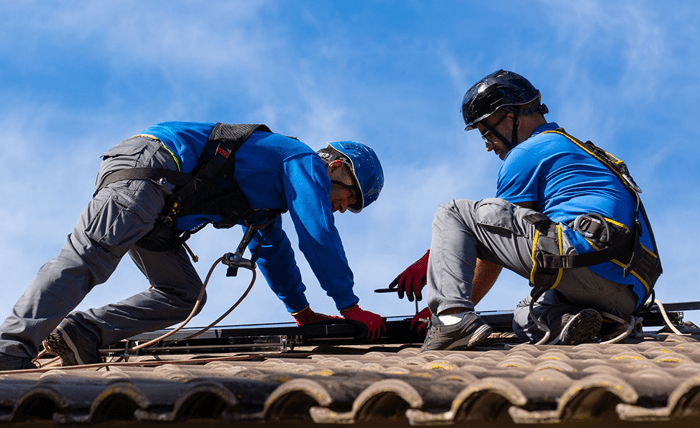Roofs are often overlooked until a leak forms or a storm causes visible damage. Yet, with consistent attention and simple maintenance, your roof can exceed its expected service life. From the materials you choose to the way you treat it over the years, every decision counts toward maximizing performance and durability.
Extending your roof’s lifespan doesn’t require complex tools or expensive upgrades. It begins with knowledge, observation, and commitment.
Understanding the Root Causes of Roof Deterioration
Roofs are exposed to constant environmental pressure. Sunlight, wind, precipitation, and fluctuating temperatures all wear down materials in different ways. The first step in long-term roof care is understanding what accelerates that wear and how to minimize it.
For example, ultraviolet radiation can dry out shingles, making them brittle and prone to cracking. Heavy rain or improper drainage can cause pooling and structural weakness. Debris buildup leads to algae or moss, which compromises roofing layers over time.
Even more subtle contributors—such as inadequate attic ventilation—can reduce the roof’s life by trapping heat and moisture beneath it.
Routine Maintenance: The Key to Longevity
Many homeowners wait until a problem becomes urgent before calling for repairs. But by then, the damage often extends beyond the surface. Instead, preventive maintenance helps catch small issues before they require major interventions like full roof replacements.
Schedule inspections at least twice a year, ideally in spring and fall. Look for cracked, curling, or missing shingles; soft spots; rusted flashing; and clogged gutters. Spotting and addressing these early can save thousands in future repair costs.
During these checks, don’t forget the underside of the roof—your attic. Damp insulation or signs of mildew may point to roof vulnerabilities that aren’t visible from the exterior.
Ventilation and Insulation: The Silent Guardians
Two elements that play a huge role in extending your roof’s lifespan are often invisible: attic ventilation and insulation. Proper airflow reduces heat buildup in summer and moisture accumulation in winter. Without it, even a new roof can develop mold, rot, or structural distortion.
Insufficient insulation leads to uneven temperature zones, ice dams, and higher energy bills. It also causes your roof to “breathe” incorrectly, resulting in early material degradation. If you’re investing in roof repairs or upgrades, consider a ventilation and insulation audit at the same time.
Don’t Underestimate Your Gutters
Your gutters play a frontline role in protecting your roof. If they’re clogged, misaligned, or damaged, water can back up onto the roof, seeping under shingles and rotting the decking below.
When homeowners tackle gutter replacements along with roofing improvements, it’s often due to years of poor water management. Make it a habit to clean gutters seasonally and verify that downspouts are directing water away from the foundation.
Some roofing companies, like Class Roofing, advise evaluating your gutters as part of a comprehensive roof checkup to ensure both systems work in harmony.
Quick Fixes vs. Long-Term Thinking
It’s tempting to patch up minor damage with a quick repair and move on. While this is sometimes appropriate, repeat patching can mask deeper issues. Shingles that continuously crack may signal poor installation, improper ventilation, or aging underlayment.
Short-term solutions should never substitute for long-term planning. Whether it’s choosing higher-grade materials, reinforcing flashing zones, or improving drainage slopes, thinking ahead minimizes future disruptions.
Seasonal Adjustments That Matter
As seasons change, so should your roofing attention. In winter, watch for ice dams and check attic airflow. In spring, clear away fallen branches and inspect for post-winter wear. Summer is a great time for roof washing to remove mold, moss, and debris. Fall is the time to clear gutters and ensure that the roof is storm-ready.
These seasonal routines may seem small, but collectively, they extend your roof’s life by keeping it clean, functional, and structurally sound.
Knowing When to Call a Professional
DIY maintenance is essential, but it has its limits. If you notice major sagging, water stains on ceilings, or unexplained increases in your energy bills, it’s time to bring in an expert. Unaddressed issues not only compromise your roof—they can affect your walls, insulation, and electrical systems.
The earlier you catch the problem, the simpler and more cost-effective the repair. Waiting too long often leads to partial or complete roof replacements, which could have been prevented.
When in doubt, it’s better to schedule a consultation with a licensed roofing contractor than risk internal damage.
Material Quality and Installation Count
Even with perfect maintenance, poor installation or low-quality materials will shorten your roof’s lifespan. If you’re building a new home or considering a replacement, take time to compare materials, warranties, and local reviews.
Modern shingles, especially those with reinforced layers or energy-saving coatings, tend to outlast traditional versions. Likewise, metal and composite roofing options offer strong resistance to heat, wind, and moisture—often with less upkeep.
Partnering with a trusted contractor makes all the difference. Experience, reputation, and transparency should guide your choice. Class Roofing, for example, is known regionally for helping homeowners navigate both material selection and long-term maintenance planning.
Don’t Forget the Trees
Landscaping and roofing may seem unrelated, but trees can have a major impact on your roof’s health. Overhanging branches can scratch shingles, break tiles, or create shady spots that encourage moss growth. In a storm, these branches can become dangerous projectiles.
Trim trees regularly and ensure there’s enough clearance between your roof and large limbs. This not only protects your shingles—it reduces the debris that ends up in your gutters each fall.
Final Thoughts: Roof Longevity is in Your Hands
A well-maintained roof is more than a functional necessity—it’s a long-term investment in your home’s value and comfort. With the right materials, consistent inspections, and seasonal care, you can extend your roof’s lifespan far beyond expectations.
Be proactive, not reactive. Treat your roof like you would any other major component of your home—worthy of attention, planning, and protection.

